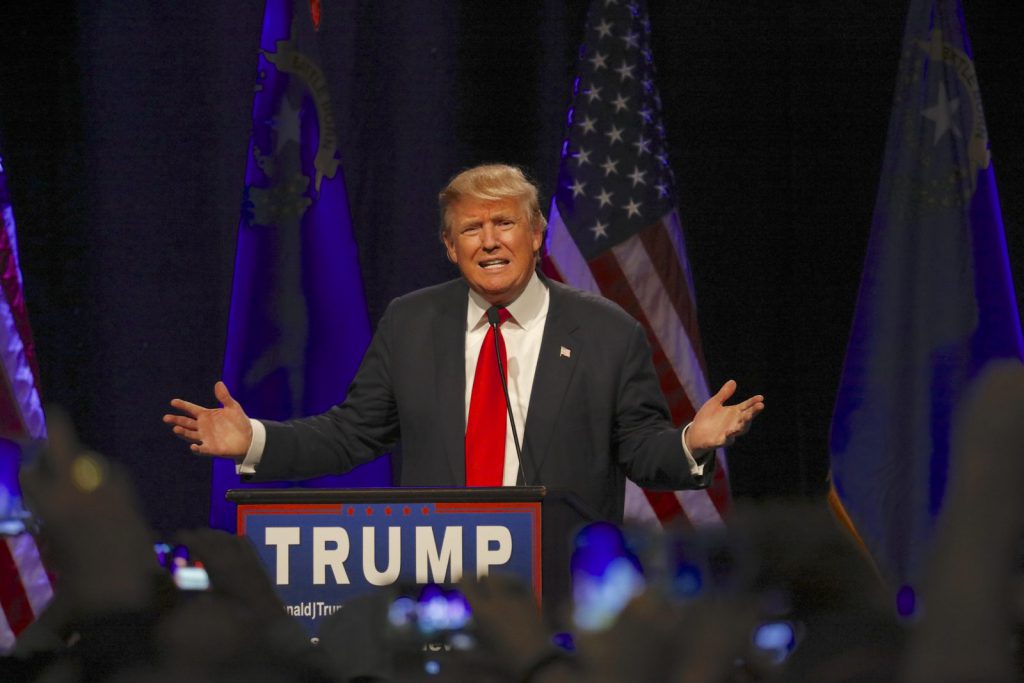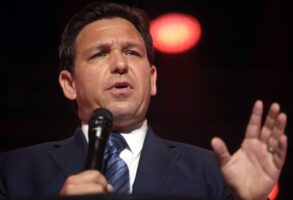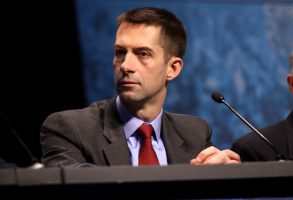
Published November 15, 2016
Donald Trump’s insurgent takeover of the Republican Party and his victory in the 2016 election together constitute the culmination of a series of institutional breakdowns across American society that have been under way for decades. Trump channeled the electorate’s deep frustrations with these failures—even as his candidacy exacerbated the underlying problems.
We have arrived at this strange point in no small part thanks to the crises created by the weakening of America’s mediating institutions and by the failure of our elite institutions to take those crises seriously and respond to them. Trump’s success makes that failure clear. His rise through the Republican primaries featured a series of wholesale attacks on the crumbling institutions of American civic and political life. The party he was running in was, he claimed, biased against him, and he repeatedly challenged the legitimacy of the very process by which he won its nomination. The leader of the largest religious denomination in America said something implicitly critical of his stance against refugees and immigrants, and Trump launched a flame war against the pope. There was literally nothing sacred to him, no line he would not cross if instinct told him to cross it.
Institutions are run by elites, and the nation’s elites were Trump’s targets—especially the political elite, the leadership of both parties. And without question, the failure of our governing elites has for at least 15 years fueled escalating frustrations that came to a head in this election season.
From the beginning of his campaign, Trump charted for himself a peculiar kind of populism designed to capitalize on America’s sense of its own frailty. Populists generally rail against the strength of society’s elites, channeling outrage about the powerful oppressing the weak. But Trump more frequently berated the American establishment for its weakness than for its strength. He said our leaders were stupid and incompetent, that they were pathetic losers who have caused the country to fall behind other nations with stronger, more capable leaders. They made bad deals. They didn’t know how to fight wars. He knew more about destroying ISIS than the generals, and more about solving the Israeli–Palestinian impasse as well; it was a “real estate deal” he’d love to make, he said.
At every turn he said and did something unthinkable that would have destroyed any other candidate at any other time in our history. But the gatekeepers have gone, and the gates are rusted and swinging open. How that happened is a story half a century or more in the making. But even as the corrosion was more and more in evidence, America’s political system ran pretty much according to the same rules of the road it had followed throughout the 20th century. Trump was the first candidate to grasp that the rules could be ignored.
Only 16 years earlier, a sitting vice president and the governor of the nation’s second largest state ran against each other for president. They both presented themselves as fine, upstanding family men in implicit contrast to the sybarite then resident in the White House. And the race they ran was remarkably civil, in part because it appeared the two parties they headed had found fairly plausible left- and right-wing paths toward meeting America’s 21st-century challenges—paths that were not wildly divergent from each other. Both parties understood these challenges as, to borrow a phrase, the dilemmas of governing at the end of history. They centered on how best to allocate the gains of a modernizing economy and how best to enable stability and democratization in a world unmoored from its Cold War constraints.
Read George W. Bush’s first address to Congress, delivered in February 2001, and you will find yourself in an alternate universe. As Bush put it, America had “a balanced budget, big surpluses, a military that is second to none, a country at peace with its neighbors.” The question was how not to waste opportunities. The first major piece of legislation he sought had to do with improving elementary and secondary education.
A year later, in Bush’s first formal State of the Union Address in January 2002, the world had changed. The September 11th attacks launched an era of insecurity and chaos, a recession had taken hold, too, and the foundations of our common life seemed much shakier. History had refused to end; indeed, Bush specifically declared that “history has called America and our allies to action, and it is both our responsibility and our privilege to fight freedom’s fight.”
Freedom’s fight has not gone well in the nearly 15 years since. To this day, our leaders have not figured out how to govern amid the actual realities of this century: global instability and rising threats, weak growth at home yielding economic insecurity and daunting public fiscal challenges, a culture at war with itself, and the continuing fracturing and fragmentation of family, community, and social institutions.
That is not only true here in the United States. Political elites throughout the developed world have made the mistake of treating problems like these as threats to the now-outdated dream of governing at the end of history, rather than threats to the physical, social, cultural, and economic security of their particular citizens. They have not grasped that the expectations of the governing elites at the beginning of this century were simply in error—the function of a failure to see how their societies had been changing. And so they have treated their people’s frustrations as part of the problem, rather than as reasons to rethink key premises and change course.
In America, this has been perhaps most evident in our immigration debates, in which a broad cosmopolitan coalition has repeatedly tried to roll over opposition to increased immigration of all kinds, offered critics essentially nothing but the enforcement of already existing laws, and treated its own efforts as “comprehensive” and balanced. These efforts have done enormous harm to our political culture and persuaded many voters that their leaders were liars who despised them. But those leaders barely grasp what they have done, having acted on inertia from an era they cannot perceive has ended.
This widespread elite disorientation has left both parties adrift and unable to offer much beyond nostalgia for 20th-century highpoints as an answer. Fifteen years after the dream of governing at the end of history should have been shattered, the best the two party elites could come up with was running George W. Bush’s brother and Bill Clinton’s wife for president. The two of them perfectly embodied the widespread if implicit wish that it could be 2001 again—if not 1965 or 1981.
This drift, and at times the outright condescension of their leaders, combined with a long-escalating loss of faith in institutions, has left many voters increasingly frustrated and angry. Trump and Bernie Sanders appealed to those on the right and left, and Trump proved particularly adept at pinpointing populist frustrations. About immigration. About politicians who failed to put their own fellow citizens first. About a fat and happy elite that seemed to benefit from every social and economic trend that hurt working-class voters. About a culture that treated the downsides of progressivism as taboos never to be discussed.
The frustrations and concerns of many poor, working-class, and middle-class Americans are rooted in vitally important realities, and they demand to be acknowledged and addressed. In acknowledging them, though, Trump has also fanned and exacerbated them. During his campaign, he offered few solutions and no real governing vision—and his disordered character threatened every moment to discredit those who backed him. Still, Trump gestured toward worries that many Americans believed were not being voiced and were even being censored.
Elite blindness and intransigence, however, is far from the whole story. The gross failure of our elite institutions and leaders has been at its heart a failure to respond to what was itself a cascading collapse of core American institutions—a collapse felt with particular force in the lives of poor, working-class, and increasingly middle-class Americans.
That collapse may be best understood as a vertiginous fall from a high point. In the two decades following the Second World War, American life was rooted in strong and cohesive social, cultural, political, and economic institutions to a degree unparalleled in our history. America’s government had just engaged in the most immense logistical military undertaking in world history with great success, and then it embarked on massive projects—from building the interstate highway system to launching human beings into space—with discipline and competence. Key swaths of the economy were dominated by large corporations that cooperated with an active government and, to an extent, with large labor unions, providing employment opportunities to Americans with a wide range of skills and abilities.
America’s cultural life at midcentury was dominated by a broad traditionalist moral consensus, at least for the white working and middle classes. Religious attendance was at a peak, families were strong, birthrates were high, and divorce rates were low. Cohesion was exceptionally strong in part thanks to a common culture dominated by relatively few and highly respected sources of information, entertainment, and ideas. But it was also strong in part because of restrictive immigration laws adopted back in the 1920s that brought the foreign-born population down to an all-time low of less than 5 percent of all Americans by the late 1960s.
And yet, almost immediately after the war, that consolidated nation began a long, slow process of unwinding and fragmenting. Over the subsequent decades, the culture liberalized and diversified, as struggles for racial equality and sexual liberation coincided with a massive increase in immigration. Meanwhile, some key parts of the economy were deregulated to keep up with rising competitors, and our labor market was forced by globalizing pressures and technology to specialize more in higher-skill work that has diminished opportunities for Americans with lower levels of education. And in politics, an exceptional elite consensus on some key issues gave way by the ’70s to renewed divisions that got sharper and sharper.
So, in one arena after another, America in the immediate postwar years was a model of consolidation and consensus, but through the following decades the consensus fractured. By the end of 20th century, this fracturing grew from diffusion into polarization—of political views, economic opportunities, incomes, family patterns, and ways of life.
This has meant many gains for America: in national prosperity, in personal liberty, in cultural diversity, in technological progress, and in options and choices in every realm of life. But over time it has also meant a loss of social order and structure, a loss of national cohesion, a loss of security and stability for many workers, and a loss of cultural and political consensus. Those losses have piled up in ways that now often seem to many to overwhelm the gains. And they have manifested themselves, too, in an overwhelming loss of faith in institutions of all kinds in America—from the family to the church, the news media to universities, corporations to the government.That loss of security and faith and the breakdown of institutions that underlies it seem to drive much of the frustration that our political elites have failed to grasp and to address, and that Trump so ably channeled. Unnervingly, though, Trump channeled that frustration as a weapon to further undermine these institutions, not to reinforce them. He saw them as standing in his way, which is what, after all, they are designed to do. He turned that frustration first against the Republican Party, just as Bernie Sanders turned the left’s frustration against the Democrats. And their efforts demonstrated the weakness and near impotence of the parties as institutions and then weakened them still further. Trump turned this rage, too, against the broader American system of government—asserting in the course of the race that our legal system, the FBI, the IRS, the electoral system, and other key institutions were all rigged, manipulated, and devoid of legitimacy.
You could see in real time the way these assaults took their toll on our politics. By the fall, as if to highlight the fragility of the American political system, an astonishingly brazen Russian intelligence operation that sought to influence the American electoral process by hacking the personal email accounts of prominent Democrats and releasing potentially damaging material to the public was treated by journalists and politicians (Trump himself first and foremost) as just another fact of life. It is hard to imagine a clearer illustration of the hollowing-out of America’s self-respect.
In this light, Trump’s promise to make America great again clearly had appeal, and yet also lacked substance. It spoke to many Americans who had a deep sense that the country has lost something essential but who have lacked the terms in which to describe what the corrosion of our core institutions has meant in their lives. But it did so by enacting and aggravating that corrosion.
Throughout the campaign, as the American Enterprise Institute’s Michael Barone has noted, support for Trump in a given geographic region could be closely correlated with weak family formation and with social isolation. And much the same was true of Trump’s extraordinary strength in the election returns. Many of his voters seemed drawn to his case, and repelled by Clinton’s elitism, because they have experienced in their own lives the hollowing-out of American life more generally.
The trouble, of course, is that while Trump implies he can do something about this, he primarily embodies and reflects the frustration of his followers without offering much in the way of addressing it. Trump acknowledges the anxiety of voters, but he does not speak to its sources. He does not seek a renewal of confidence in key American institutions; he hastens the loss of that confidence.
Indeed, Trump has responded to the problem in much the same way as the elites he denounces and the working-class voters he now represents: He has let himself fall into nostalgia for an America that worked, and has effectively promised a return without speaking to why things have changed and what a revival would call for. He says that he alone can tackle the profound challenges that have formed his voters into something of a protest movement. But Trump is weak, too, and the political phenomenon he has created around him is the culmination of a cascade of weakness that he is effectively powerless to address.
Addressing it would require an agenda of institutional revival—cultural renewal, structural reform, constitutional restoration, and a modernizing, decentralizing drive in public policy rooted in an understanding of the importance of institutions in American life. Donald Trump brings nothing like such an agenda to the table, though his election and the need to govern in light of the general appeal he made to the public might make Republicans seek one. America is far from the broken, Third World dystopia that Trump’s wild, heedless rhetoric so often summoned. Our institutions have grown weaker, but they do function and are there to be restored and reinforced as well. But Donald Trump is an enemy of institutions, not a redeemer of them. “I alone can solve,” he told the world on Twitter. That is more like a description of the problem than the way to a solution. Let us hope the responsibility he now bears will move him to seek something more.
Yuval Levin is the Hertog Fellow at the Ethics and Public Policy Center.








